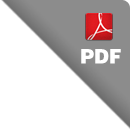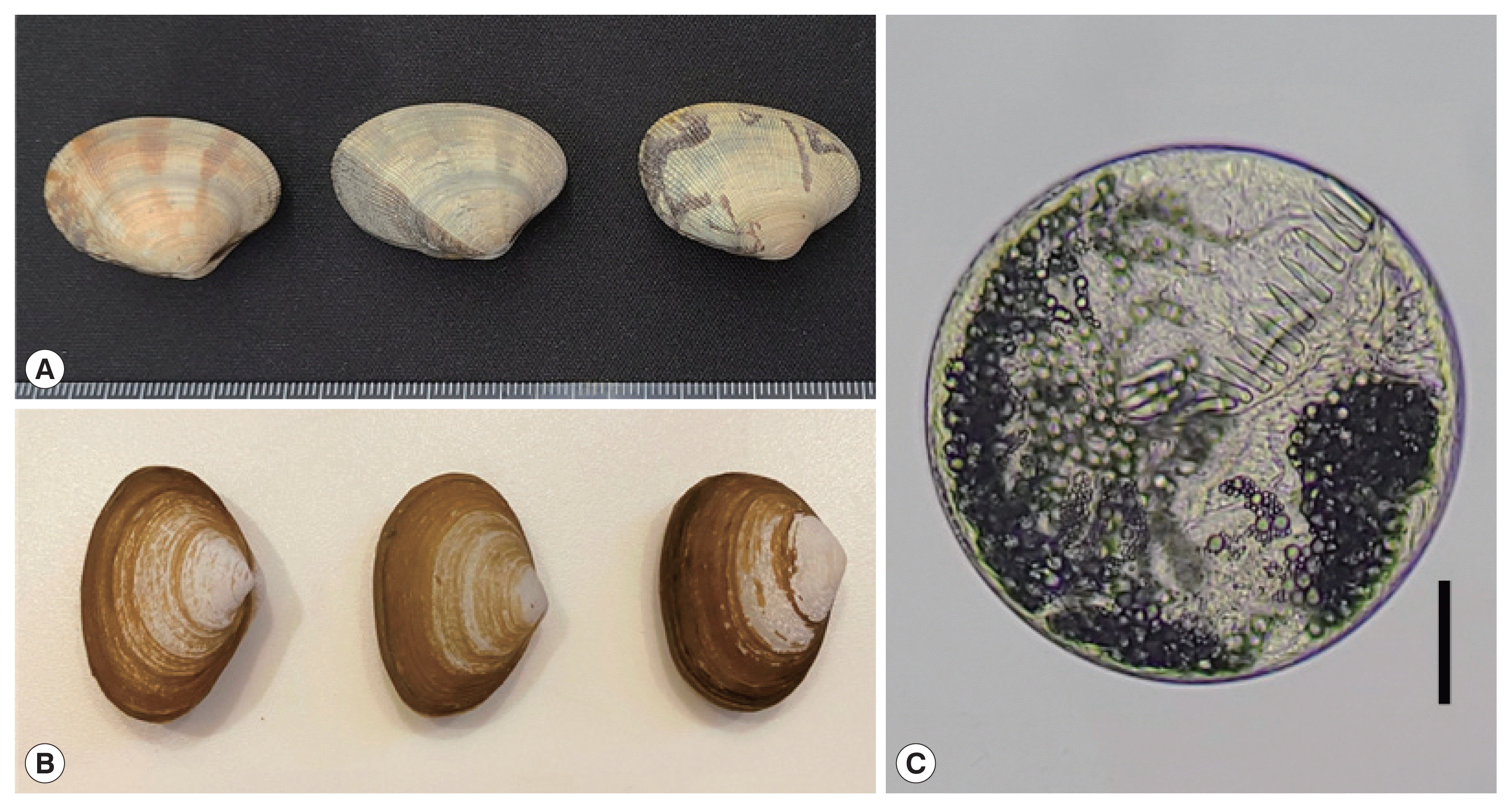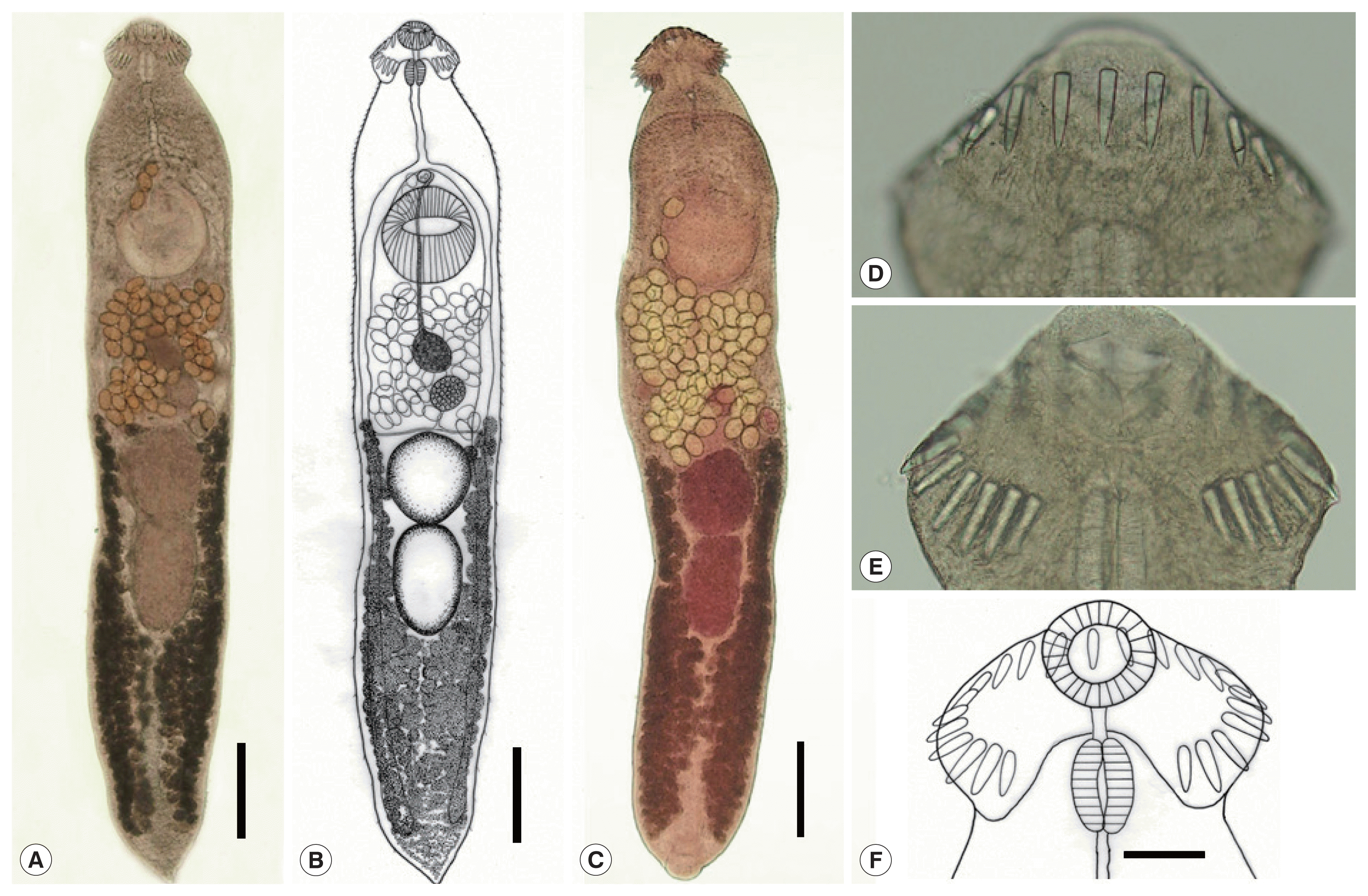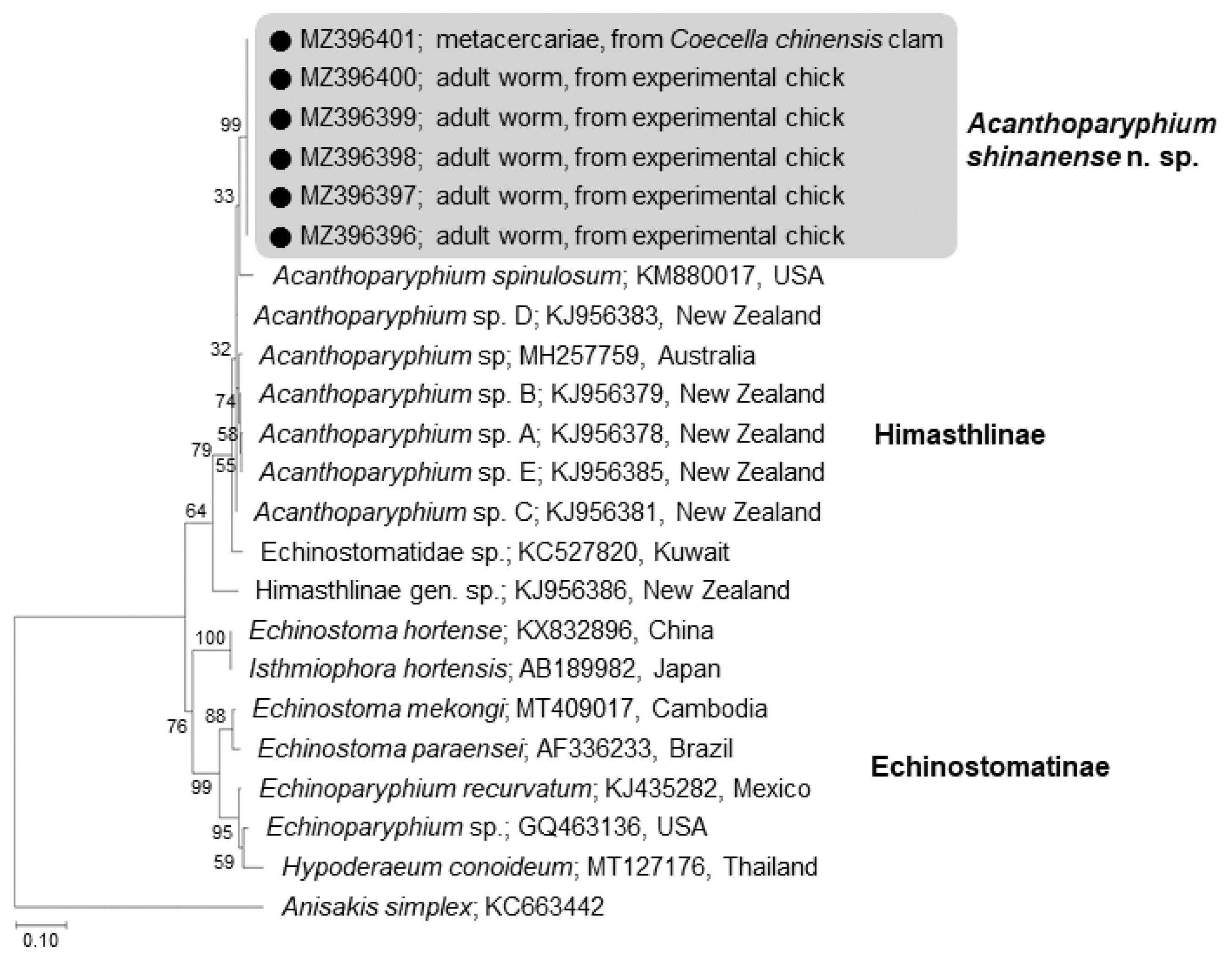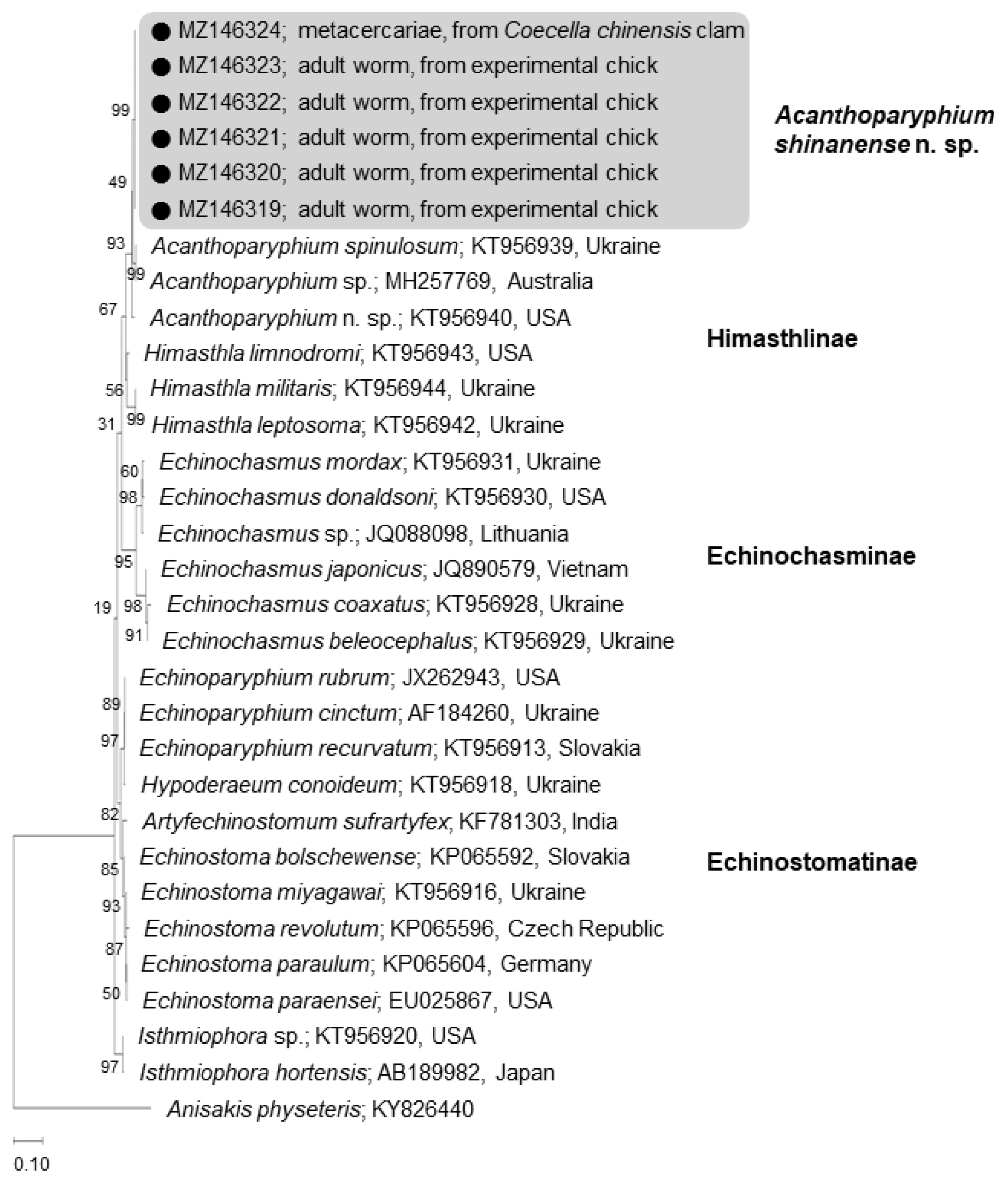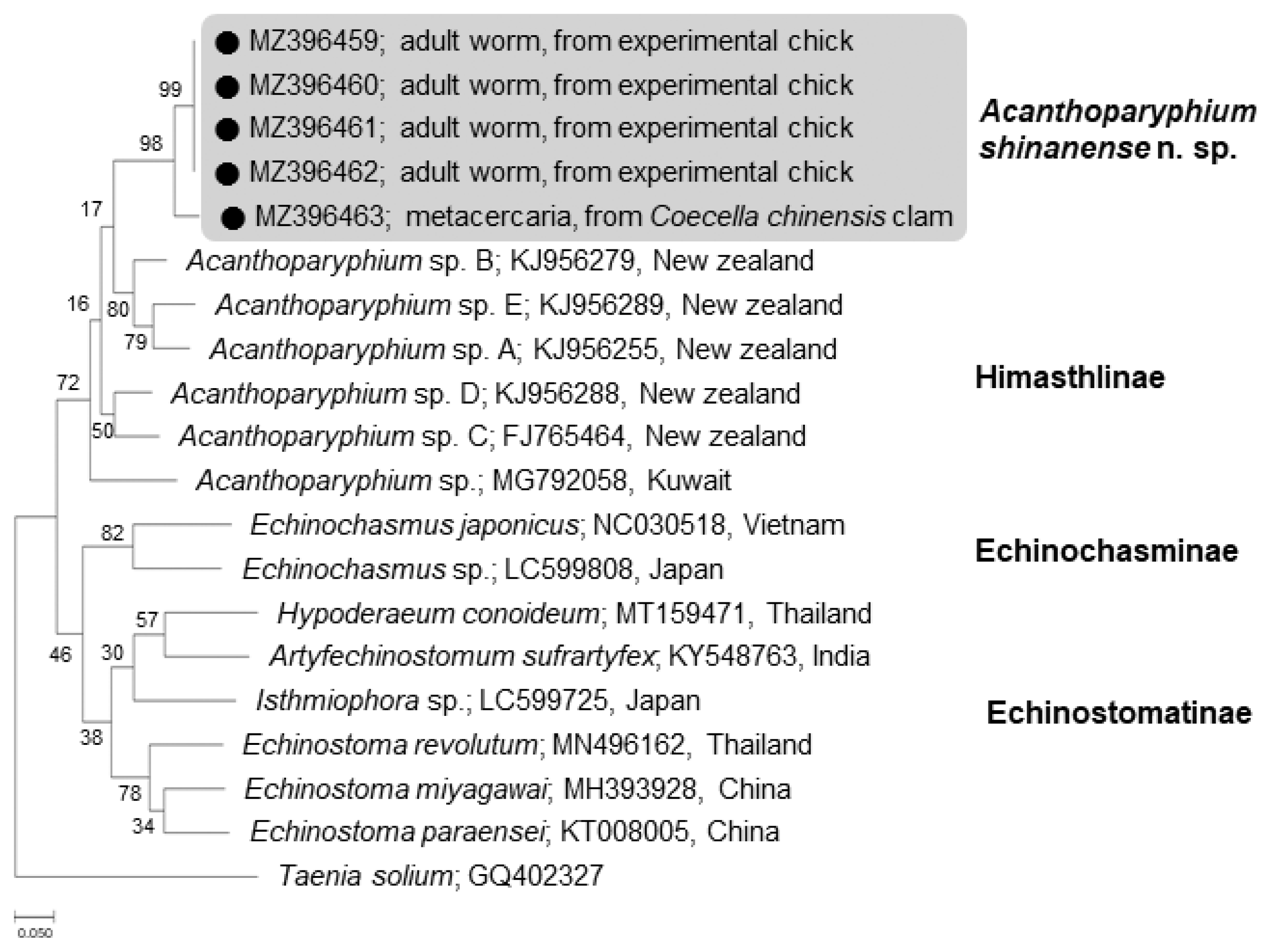1. Chai JY. Echinostomes in humans. In Fried B, Toledo R eds, The Biology of Echinostomes. New York, USA. Springer. 2009, pp 147-183.

2. Chai JY. Chapter 19. Echinostomes. In Xiao L, Ryan U, Feng Y eds, Biology of Foodborne Parasites. Boca Raton, USA. CRC Press, Taylor & Francis Group. 2015, pp 427-443.
3. Chai JY. Human Intestinal Fluke: From Discovery to Treatment and Control. Dordrecht, The Netherlands. Springer Nature. 2019, pp 1-549.
4. Yamaguti S. Studies on the helminth fauna of Japan. Part 3. Avian trematodes, II. Jpn J Zool 1934;5:543-583.
5. Yamaguti S. Studies on the helminth fauna of Japan. Part 25. Trematodes of birds, IV. Jpn J Zool 1939;8:129-210.
6. Bearup AJ. Life history of
Acanthoparyphium spinulosum Johnston, 1917 (Trematoda: Echinostomatidae). Austral J Zool 1960;8:217-225
https://doi.org/10.1071/ZO9600217

7. Martin WE, Adams JE. Life cycle of
Acanthoparyphium spinulosum Johnston, 1917 (Echinostomatidae: Trematoda). J Parasitol 1961;47:777-782
https://doi.org/10.2307/3275470


8. Velasquez CC. Life history of
Acanthoparyphium paracharadrii sp. n. (Trematoda: Echinostomatidae). J Parasitol 1964;50:261-265
https://doi.org/10.2307/3276282


10. Martorelli SR, Poulin R, Mouritsen KN. A new cercaria and metacercaria of
Acanthoparyphium (Echinostomatidae) found in an intertidal snail
Zeacumantus subcarinatus (Batillaridae) from New Zealand. Parasitol Int 2006;55:163-167
https://doi.org/10.1016/j.parint.2006.02.001


11. Han ET, Chai JY.
Mactra veneriformis, an intertidal clam, as a new second intermediate host for
Acanthoparyphium marilae (Digenea: Echinostomatidae). Korean J Parasitol 2008;2:101-104
https://doi.org/10.3347/kjp.2008.46.2.101

13. Johnston SJ. On the trematodes of Australian birds. J Royal Soc New South Wales 1917;50:187-261.
14. Fischthal JH, Kuntz RE. Some digenetic trematodes of mammals from Taiwan. Proc Helminthol Soc Wash 1976;42:149-157.
15. Little JW, Hopkins SH, Schlicht FG.
Acanthoparyphium spinulosum (Trematoda: Echinostomatidae) in oysters of Port Isabel, Texas. J Parasitol 1966;52:663.

16. Bass HS, LeFlore WB. In vitro excystment of the metacercaria of Acanthoparyphium spinulosum (Trematoda: Echinostomatidae). Proc Helminthol Soc Wash 1984;51:149-153.
17. Nguyen AT, Kuwata C, Kuris AM. A synthetic workflow for a coordinated direct observation and genetic tagging applied to a complex host-parasite interaction. Parasitol Res 2015;114:2015-2021
https://doi.org/10.1007/s00436-015-4437-8


18. Abdul-Salam J, Al-Taqi M, Sreelatha BS. Ultrastructure of metacercarial cyst wall of Acanthoparyphium spinulosum (Digenea: Echinostomatidae). J Parasit Dis 2007;31:108-113.
20. Yamaguti S. Systema Helminthum. I(Part I):The Digenetic Trematodes of Vertebrates. New York, USA. Interscience Publishers Inc. 1958, pp 1-979.
21. Yamaguti S. Synopsis of Digenetic Trematodes of Vertebrates. Tokyo, Japan. Keigaku Publishing Co. 1971, pp 1-1073.
22. Huston DC, Cutmore SC, Cribb TH. Molecular systematics of the digenean community parasitizing the cerithiid gastropod
Clypeomorus batillariaeformis Habe & Kusage on the Great Barrier Reef. Parasitol Int 2018;67:722-735
https://doi.org/10.1016/j.parint.2018.07.008


23. Soota TD, Srivastava CB, Ghosh RK. Studies on the helminth fauna of the Great Nicobar Island. Part I. Trematoda. Proc Indian Acad Sci (Section B) 1970;72:241-250.
24. Skrjabin KI, Bashkirova EI. Family Echinostomatidae Dietz. 1909, In Skrjabin KI ed, Trematodes of Animals and Man. Moscow-Leningrad. Russia Izdatelstvo Akademii Nauk SSSR. 1956, pp 51-930 (in Russian).
25. Chen HT. Fauna Sinica. Platyhelminthes. Trematoda. Digenea (I). Beijing, China. Science Press. 1985, pp 1-697 (in Chinese).
26. Boyce K, Hide G, Craig PS, Harris PD, Reynolds C, Pickles A, Rogan MT. Identification of a new species of digenean
Notocotylus malhamensis n. sp. (Digenea: Notocotylidae) from the bank vole (
Myodes glareolus) and the field vole (
Microtus agrestis). Parasitology 2012;139:1630-1639
https://doi.org/10.1017/S0031182012000911


27. Leung TLF, Donald KM, Keeney DB, Koehler AV, Peoples RC, Poulin R. Trematode parasites of Otago Harbour (New Zealand) soft-sediment intertidal ecosystems: life cycles, ecological roles and DNA barcodes. NZ J Marine Freshwat Res 2009;43:857-865
https://doi.org/10.1080/00288330909510044

28. Dietz E. Die Echinostomiden der Vögel. Zool Jarb 1910;12(suppl):265-512 (in German).
29. Cable RM, Conner RS, Balling JW. Digenetic trematodes of Puerto Rican shore birds. Sci Surv Puerto Rico Virgin Island (by New York Acad Sci) 1960;17:187-255.
30. Rybakov AV, Lukomskaya OG. On the life cycle of Acanthoparyphium macracanthum sp. n. (Trematoda: Echinostomatidae). Parazitologiya 1988;22:224-229 (in Russian).
31. Velasquez CC. Life history of
Acanthoparyphium paracharadrii sp. n. (Trematoda: Echinostomatidae). J Parasitol 1964;50:261-265
https://doi.org/10.2307/3276282


32. Soota TD, Srivastava CB, Ghosh RK. The helminth fauna of Andaman and Nicobar Islands, Trematoda. Rec Zool Surv India 1972;67:281-285.
33. Chakrabarti S. On a trematode parasite Acanthoparyphium jeetai n. sp. (Echinostomatidae: Himasthlinae) from little stint, Calidrus (Calidrus) minuta (Leiser) from Chennal Coast, India. Rec Zool Surv India 1972;103:71-78.
34. Tubangui MA. Trematode parasites of Philippine vertebrates, VI. Description of new species and classification. Phil J Sci 1933;52:167-197.
36. Little JW. The excystment, growth and reproduction of
Acanthoparyphium spinulosum Johnston, 1917 (Trematoda) in chicks fed various diets. Parasitology 1970;60:61-78
https://doi.org/10.1017/S0031182000077258


37. Cho J, Jung BK, Chang T, Sohn WM, Sinuon M, Chai JY.
Echinostoma mekongi n. sp. (Digenea: Echinostomatidae) from riparian people along the Mekong River in Cambodia. Korean J Parasitol 2020;58:431-443
https://doi.org/10.3347/kjp.2020.58.4.431



38. Keeney DB, Palladino J, Poulin R. Broad geographic analyses reveal varying patterns of genetic diversity and host specificity among echinostome trematodes in New Zealand snails. Parasitology 2015;142:406-415
https://doi.org/10.1017/S0031182014001279


39. Ito J. Studies on the brackish water cercariae in Japan. III. Three new echinostome cercariae in Tokyo Bay, with a list of Japanese echinostome cercariae. Jpn J Med Sci Biol 1957;10:439-453.


40. Nguyen AT. Genetic diversity and its relationship to host-specificity of a trematode parasite (Acanthoparyphium spinulosum). PhD Thesis. University of California (Santa Barbara); USA: 2012. 1-87.
41. Richard J. Acanthoparyphium charadrii Yamaguti, 1939 chez Squatarola squatarola. Mem Mus Nat Hist Natur s A Zool 1966;41:125-126 (in French).



